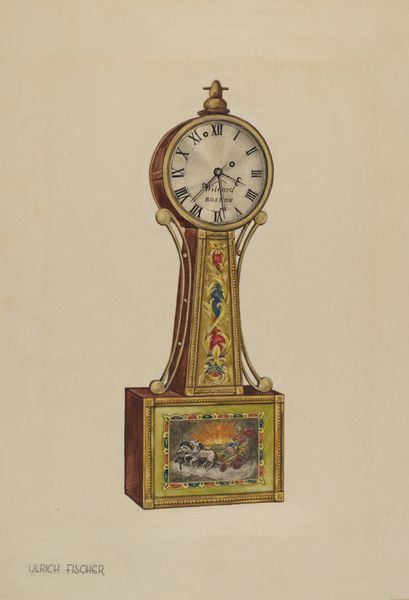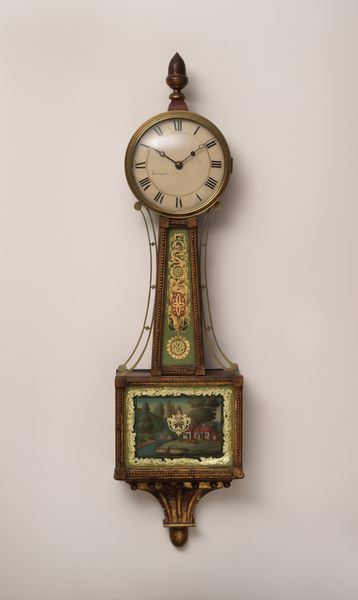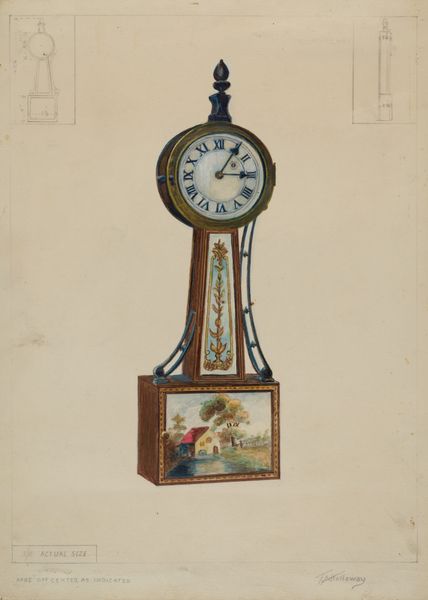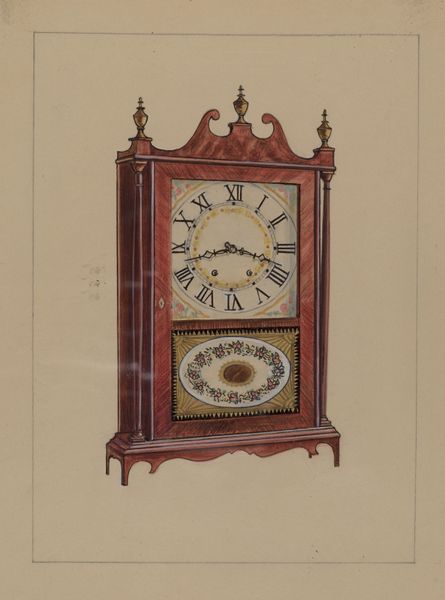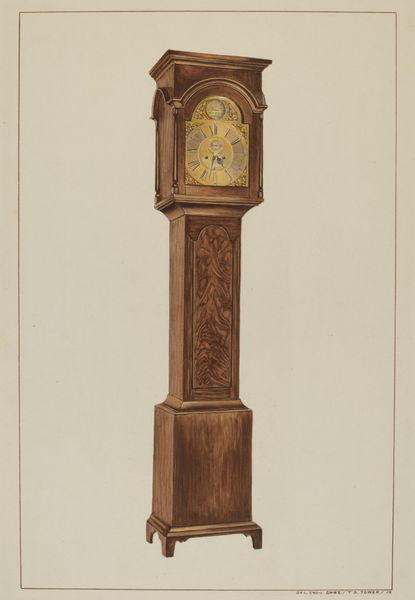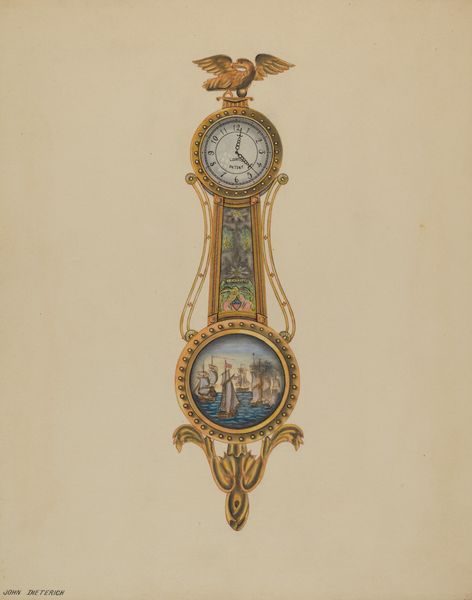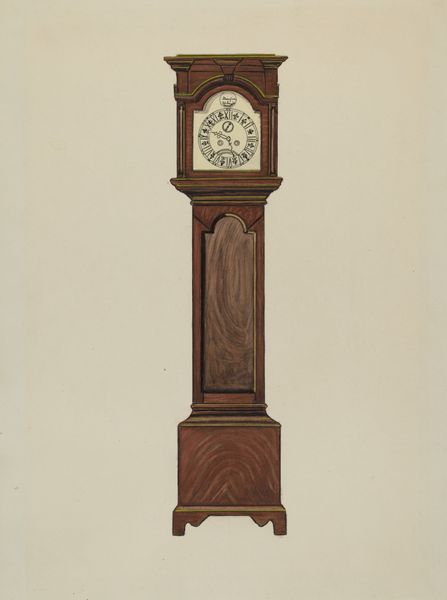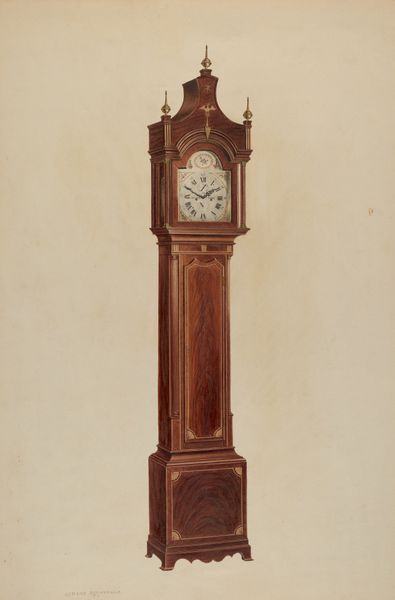
drawing, watercolor
#
portrait
#
drawing
#
water colours
#
watercolor
#
decorative-art
#
miniature
#
watercolor
Dimensions: overall: 50.8 x 36.9 cm (20 x 14 1/2 in.) Original IAD Object: 32 1/2"high; width of dial, 8"; width, base-10". See d.s. for dets
Copyright: National Gallery of Art: CC0 1.0
Curator: Here we have Frank M. Keane's "Banjo Clock," a watercolor piece created around 1939. What strikes you about it? Editor: Immediately, it feels almost like a miniaturized architectural rendering. The detail work, especially on the clock face and the base panel, has this fascinating interplay of precision and artistic interpretation. Curator: Keane's choice of watercolor adds to that impression, doesn’t it? Watercolors during this period were frequently used for commercial designs, indicating perhaps the accessibility and intent of the art towards the wider public audience. Editor: Precisely! The decision to portray this clock, this specific timekeeping instrument with an eagle perched on top, elevates its status. There is an almost folksy artisanal craftsmanship involved. I’m particularly drawn to the painting in the lower part—it is like a tiny window. Curator: Ah, yes! You're noticing the distinctly neoclassical subject. Note also that it seems to replicate elements commonly found in the decoration of such timepieces, reflecting a larger cultural embrace of American and neoclassical design. Editor: Right, these weren’t just time-telling tools; they embodied ideals and status. The very act of decorating such objects meant labour. There is time involved beyond what the timepiece measured. How was Keane positioned in the broader decorative arts movement, though? Curator: Keane existed, as many artists did, on a kind of professional periphery, engaging in craft while being attuned to shifts in art and society. Such renderings could be aiming to inspire, or more likely, document trends in interior decor for potential clients. Editor: It really makes you think about how something as everyday as a clock can become this intersection of labour, skill, social values, and artistic interpretation. These designs also make statements about the intended audience for them. It opens such a wonderful discussion. Curator: Yes, precisely. This single watercolor shows how everyday objects were intertwined with ideas about progress, commerce and aesthetics of the period. A complex object visualized here in simple, effective way. Editor: Thank you! Curator: You are most welcome!
Comments
No comments
Be the first to comment and join the conversation on the ultimate creative platform.
